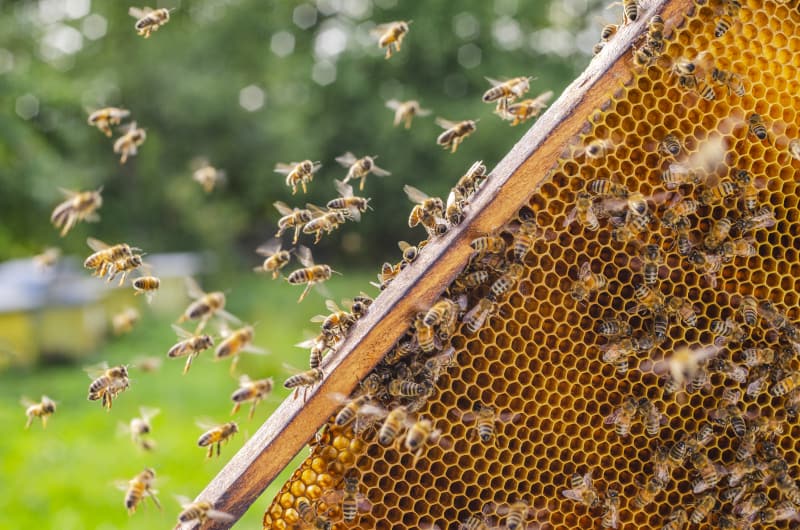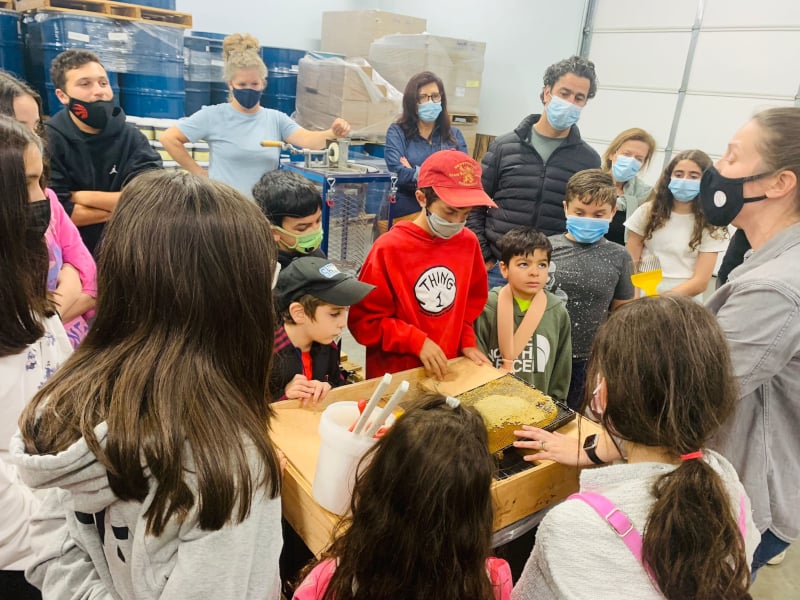
Dear Friends,
The widespread custom on both nights of Rosh Hashanah is to eat various kinds of foods as a symbolic good omen for the new year. Of all the different items we partake of, perhaps the most famous is dipping the apple in honey. What is so special about this symbolic gesture? Is it just about “a sweet new year”? What deeper significance do the apple and honey represent?
If you asked someone where an apple comes from, the answer would most likely be an apple tree. Someone a bit more technical might say, an apple seed. But, what makes the apple tree grow and bear fruit? The answer is simple: a bee. The bee transfers pollen to the tree and enables it to blossom and produce the apples that we eat.
This week we went with a group of 40 adults and children to experience an un’bee’lievable hands-on honey extraction process. We learnt and observed how the Queen bee and worker bees work together, creating perfectly intricately designed hexagonal patterned honeycombs produced from the nectar of flowers collected by the bees, broken down into simple sugars stored inside the honeycomb. The constant fanning of the bees’ wings causes evaporation, creating pure sweet liquid honey, which is then extracted, sieved and put in jars ready to be eaten. We got to remove the honey from the combs and taste different honey flavours and colours that vary based on the nectar collected by the bees. To hear about the micro details of the process and design was a humbling experience and testimony to the greatness of nature that G-d created.
When we dip the apple in the honey, we essentially declare our recognition and appreciation for the process we don’t see. Even though pollination is typically out of the human eye’s view, we acknowledge it and validate it. For this reason, we dip the apple into the honey and don’t merely place the honey on top of the apple, to highlight that the apple we hold originates from the honey that we are dipping into.
The numerical value of devash (honey) is 306, equaling the words Av Harachamim (Father of Compassion). On Rosh Hashana, we recognize that G-d, our Father of Compassion, whom, although we cannot see, grants us life and all that we need.
Dipping the apple in the honey is a lesson in hakarat hatov (appreciation), recognizing the true source of everything in our lives and appreciating that it all comes from our beloved Father in heaven, whose love for us is so powerfully strong and potently sweet.
It is worth noting that Ben ish Chai in a letter, writes, some have the custom to dip the [bread and the] apple in white sugar as was customary in Baghdad, instead of honey. Since sugar, kabbalistically comes from the attribute of Chesed (kindness) and honey from the attribute of Gevurah (severity).
Wishing you a Shabbat Shalom and a Shana Tova Umetuka,
Rabbi Shlomo Gabay

